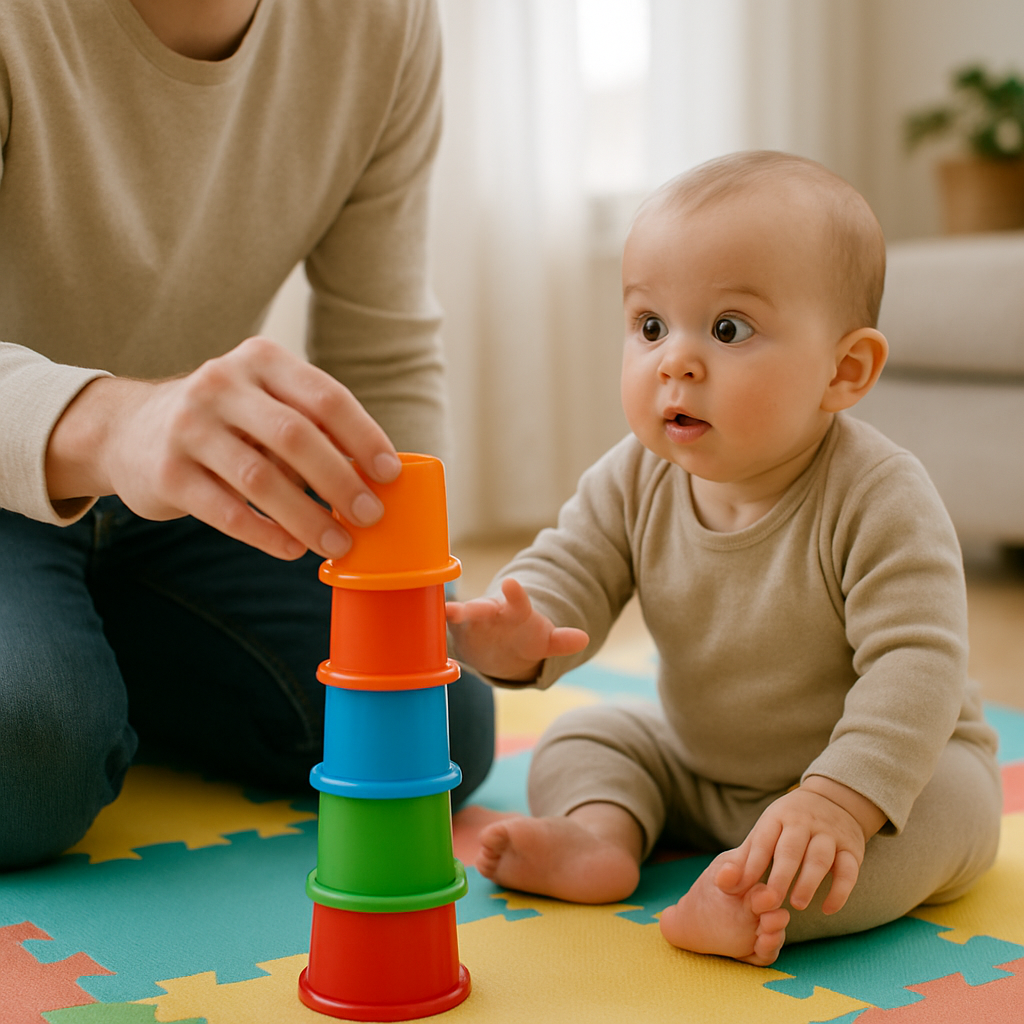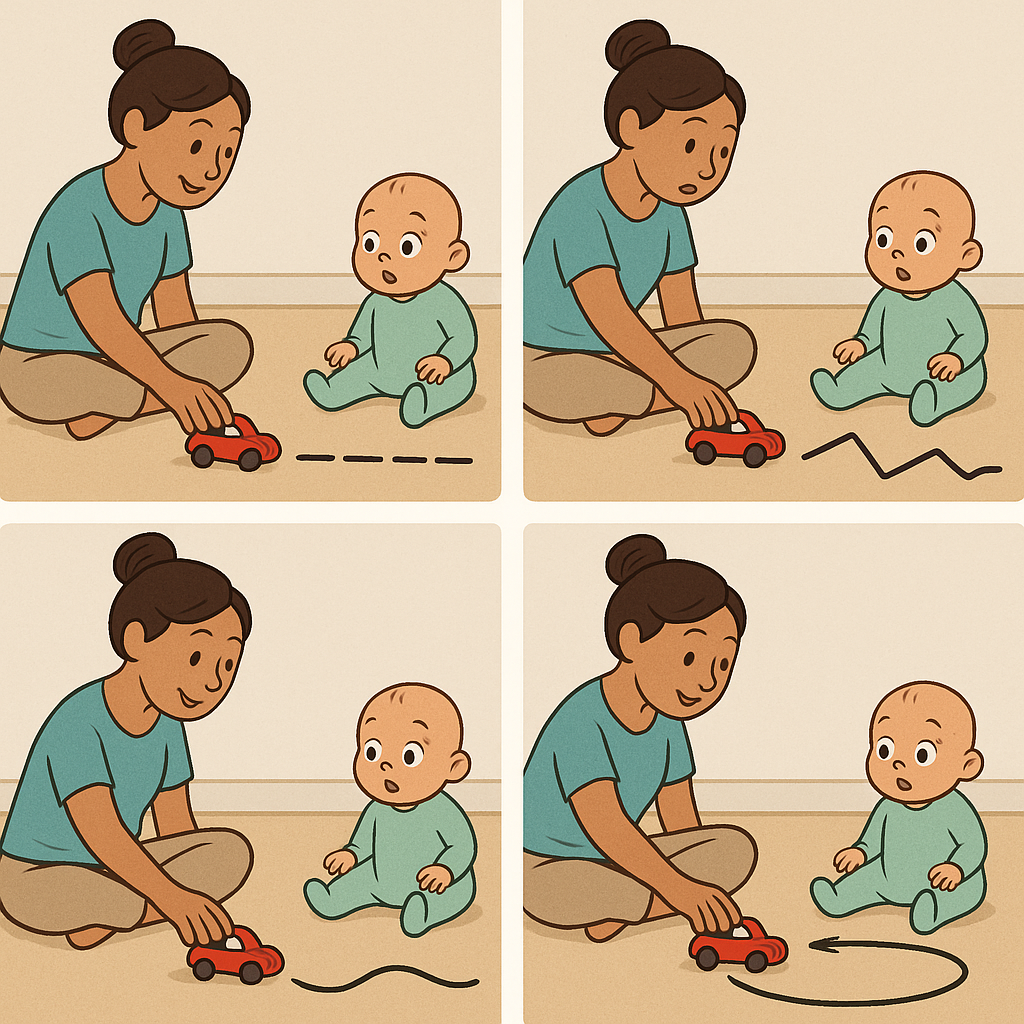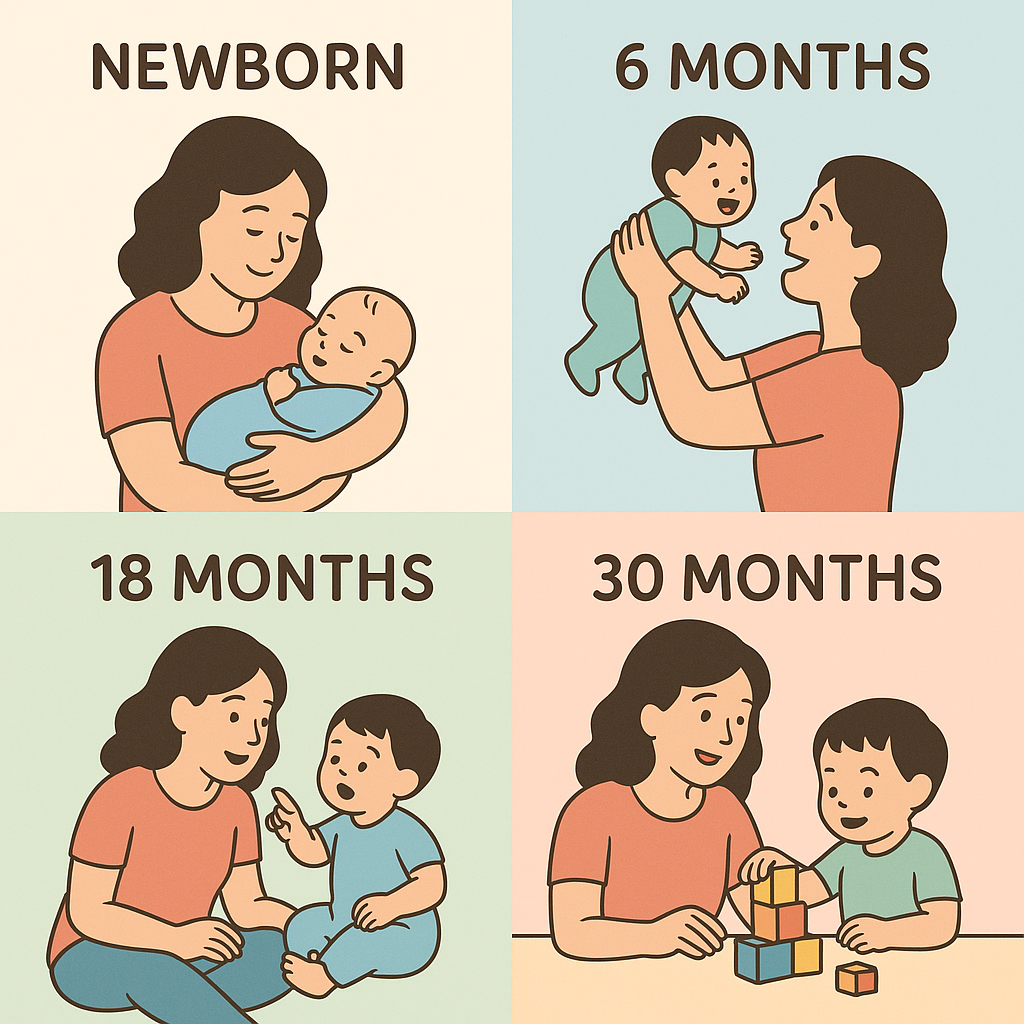Your baby is secretly studying you like a mini-scientist; every shrug, smile, and “oops!” rewires their brain. From the first gaze to the first step, infants learn fastest by watching the grown-ups they trust. The way you read a recipe, solve a stuck zipper, or giggle at a mistake literally shapes their neural wiring. Below you’ll discover how to harness this “modeling learning” power—actively demonstrating curiosity, problem-solving, and resilience—to turbo-charge brain development during the precious early years.
- Why does a baby’s brain light up when parents model learning?
- How can everyday routines become mini science lessons for your baby?
- What makes “surprise variety” the secret sauce of infant learning?
- How do serve-and-return exchanges turn modeling into two-way learning?
- Which parental mindsets best model curiosity and resilience?
- How can parents guard against modeling stress, screens, and negativity?
- Can dads, grandparents, and caregivers model learning just as powerfully?
- Age-by-age cheat sheet: What should you model from birth to 36 months?
- Your Top Questions, Answered
- How does this all circle back to your everyday parenting journey?
Why does a baby’s brain light up when parents model learning?
Because watching you try new things activates the same circuits that let babies imitate and explore.
EEG studies show infants’ attention—measured by frontal theta power—soars when adults perform infant-directed actions with playful variation rather than rigid repetition. Learn how infant-directed actions boost attention. These neural fireworks predict better imitation scores and bolder exploration weeks later.
Mirror neurons in the premotor cortex mirror what they see, priming babies to copy movements, sounds, and even emotions. Explore mirror neurons in infants. When you exaggerate, slow down, or add a tiny surprise (“Look, the block goes on its SIDE!”), you feed those neurons fresh information and keep attention locked in.
Create a stage for this brain show by setting up a responsive play area; see tips in Creating a Brain-Boosting Home for Your Baby.

How can everyday routines become mini science lessons for your baby?
Narrate what you’re doing and invite tiny participation.
Daily rituals are ripe for brain-building when you “think aloud.” During a diaper change, say, “First we open the tabs, then wipe—so clean!” Cooking? Let your baby smell basil while you explain, “Green leaves add flavor. Mmm!” This running commentary pairs language with action, anchoring procedural memory through consistency. See why narrating helps language growth.
Need structure? Turn to predictable Baby Routines and sprinkle in these quick ideas:
- Laundry: Hold up socks—“yellow vs. blue”—and let your baby grab a match.
- Brushing teeth: Tap the brush on the sink to show cause-and-effect splashes.
- Walks: Point to a bird, wonder aloud, “Where is it flying today?”
Each small act is a controlled “experiment” your child watches, tests, and stores.
What makes “surprise variety” the secret sauce of infant learning?
Tiny twists keep neurons from going on autopilot.
Research finds that variability—not just big motions—triggers prediction error, releasing dopamine that stamps memories. To sprinkle surprise:
- Change speed: Roll a car slowly, then zoom it.
- Swap tools: Stir oatmeal with a wooden spoon today, a whisk tomorrow.
- Flip sequence: Stack rings largest-to-smallest, then reverse.
Aim for one fresh twist each round so attention stays high yet comfortingly familiar. Balance the thrill of novelty with calm cues using guidance from Overstimulation vs. Boredom: Balancing Baby’s Brain.

How do serve-and-return exchanges turn modeling into two-way learning?
By turning your demonstration into a conversation.
Serve-and-return begins when your baby “serves” (a coo, a bang, a look) and you “return” with a related response. Contingent replies light up language circuits and teach social timing. Understand serve-and-return’s role. Micro-story: Your 7-month-old bangs a spoon. You echo the rhythm, then add a new beat. Baby pauses, listens, bangs back—instant jam session and synapse workout.
Keep the duet unplugged to maximize attention. For more ideas, explore Screen-Free Parenting: Boosting Active Learning.
Which parental mindsets best model curiosity and resilience?
Let your child see you try, fail, and try again.
Babies absorb not just outcomes but attitudes. Narrate your problem-solving: “This zipper is stuck. I’ll wiggle it… almost… got it!” By making effort visible, you model a growth mindset linked to future grit.
Short, real-life example: You misbutton a onesie, laugh, say “Silly me, let’s fix it,” and calmly redo it. A week later your toddler resets their toppled block tower without tears, echoing your persistence.
Support these wins with gentle Positive Reinforcement—a smile, a clap, a “You kept trying!”
How can parents guard against modeling stress, screens, and negativity?
Regulate yourself first; babies borrow your calm.
Cortisol is contagious. Harsh tones raise an infant’s heart rate within seconds. Instead, model coping:
- Say, “Mom’s taking deep breaths,” as you inhale slowly.
- Step away for 30 seconds if frustration spikes.
- Share one joyful ritual per day—sing a favorite song at lunch.
When screens creep in, keep them purposeful and brief. See Safe Screen Time: Educational Media for Babies for guidelines, and address your own wellbeing with Parental Stress: How It Impacts Your Baby’s Brain.
Can dads, grandparents, and caregivers model learning just as powerfully?
Absolutely—multiple consistent models amplify learning.
A 2016 NIH study found higher paternal caregiving correlated with better scores on the Ages & Stages Questionnaire and reduced maternal stress. Discover paternal caregiving benefits. Grandparents add cultural songs or new languages, broadening neural maps.
Consistency is key: share your modeling tips with all caregivers. Dive deeper into inclusive strategies in Family Involvement: How Loved Ones Boost Baby’s Brain.
Age-by-age cheat sheet: What should you model from birth to 36 months?
Below is a quick reference to keep your demonstrations age-tuned.
| Age | Brain-Boosting Modeling Ideas |
|---|---|
| 0–4 mo | Exaggerated facial expressions, gentle mirror play, slow blinking games |
| 4–12 mo | Show object exploration—shake, tap, roll; narrate “why” tone (“I wonder what sound this makes”) |
| 12–24 mo | Simple problem-solving: unsticking blocks, tidying toys together, label emotions (“I’m happy!”) |
| 24–36 mo | Collaborative cooking (stirring, pouring), open-ended “What happens if…?” questions, stay persistent with puzzles |
Plan your day with the sample schedule in Daily Routine for a Brain-Boosted Baby.

Your Top Questions, Answered
-
Is surprise better than repetition?
Both matter—repeat the goal, vary the path. Repetition cements memory; small surprises keep attention alive. -
Do I need special toys to model learning?
No. Your face, voice, and everyday objects beat pricey gadgets. Explore child-led discovery in Baby-Led Play: Why Curiosity Boosts Brain Growth. -
How much screen co-viewing is OK under two?
Occasional live video chat only. Otherwise, lean on real-world play; brains crave 3-D interaction. -
What if I’m back at work and miss daytime play?
Focus on high-quality moments. Even 15 engaged minutes reinforce learning. Coordinate with caregivers using tips from Quality vs. Quantity Time: What Your Baby Needs.
How does this all circle back to your everyday parenting journey?
By turning ordinary moments into live demonstrations of curiosity, resilience, and joy, you give your child neural tools that last a lifetime. Surprise plus serve-and-return plus visible effort equals a potent brain-building formula—no flashcards, no $200 toys, just the magic of you. Ready to redesign your play space and keep those neurons firing? Visit our guide to a Brain-Boosting Home. Enjoy the journey—you’re wiring wonder into every giggle and “oops!”